The Bechdel Test and Disney Films
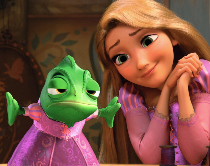
There is a strong gender imbalance in Hollywood these days (and throughout the history of film) that has resulted in most studio films being very male-centric and featuring few (if any) female characters of substance. The Bechdel Test, originated by Alison Bechdel in her 1985 comic “The Rule” from “Dykes to Watch Out For”, is a litmus test for gauging the active presence of female characters in films and how well-rounded and complex those characters are.
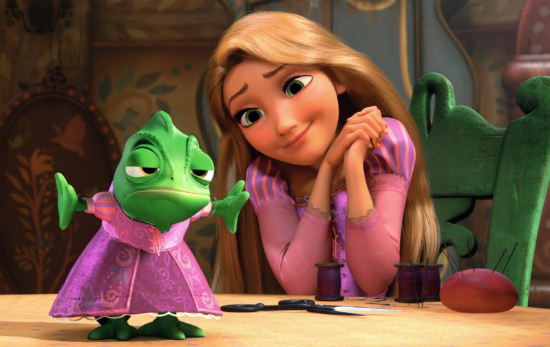
Screenshot from Disney's Tangled, image copyright Disney
The Bechdel Test Rules:
1. There are at least two (named/significant) female characters who…
2. Talk to each other about…
3. Something other than a man
Despite the simplicity of the rules, the Bechdel test can inspire a lot of disagreement when discussing particular films, with frequent debates about whether two females count as “named” characters and whether their conversation(s) are significantly non male-centric. I just saw Bridesmaids this past week, and with a cast of six female characters who do nothing BUT talk to each other, I think that the film passes the test with flying colors, but other people might argue that all of the conversations in Bridesmaids were about the wedding and relationships – and by extension, men.
Disney animated films seem to be a mixed bag of movies that pass or fail the Bechdel test. On one hand, female characters feature prominently in Disney’s “Princess” movies (but they don’t always talk to other women), and on the other hand, Pixar’s films are full of complex and interesting characters, but none of Pixar’s films have female characters as the central protagonists.
Below is a chart of how Disney films rank on the Bechdel test, according to submitters from the Bechdel Test Movie List.
|
Alice in Wonderland The AristoCats Beauty and the Beast The Black Cauldron Bolt Brave (NEW!) A Bug’s Life Cars Cinderella The Emperor’s New Groove Frozen (NEW!) Hercules Home on the Range The Incredibles Lilo and Stitch Mulan One Hundred and One Dalmatians Peter Pan Pocahontas The Princess and the Frog The Rescuers Robin Hood Sleeping Beauty Snow White and the Seven Dwarfs Tangled Toy Story 3 Wreck-It-Ralph (NEW!) |
Aladdin |
Do you disagree with the “Pass/Fail” status of any of these films? Share your opinions here or post your comments directly to the Bechdel Test Movie List website.
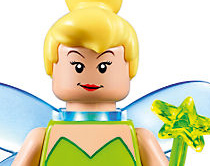

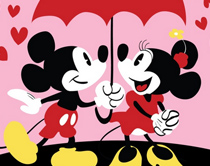
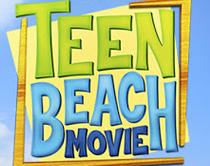
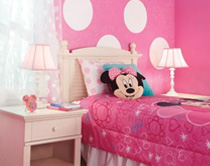
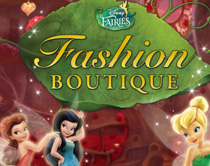
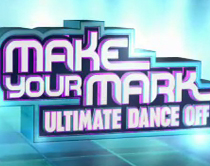
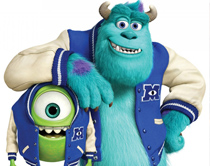
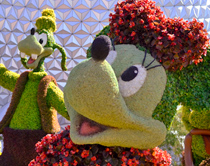
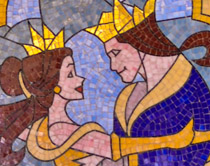


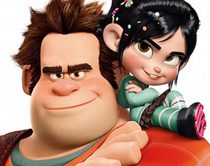
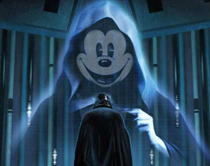
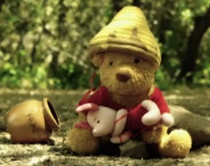
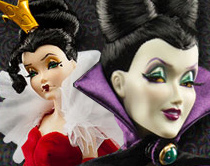
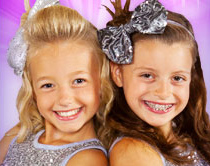

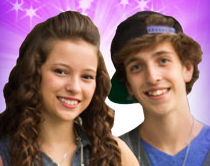
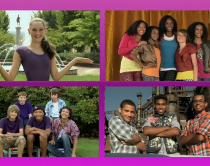

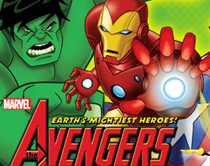
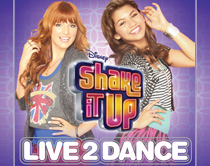
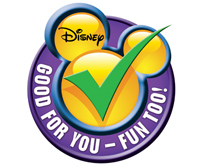

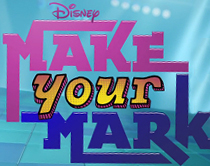
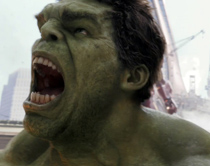
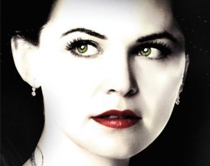
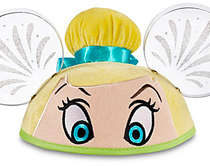

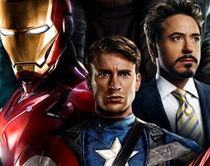


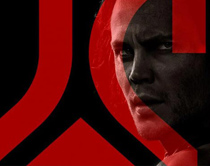
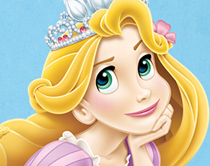


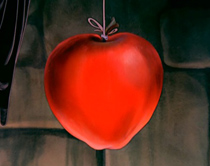


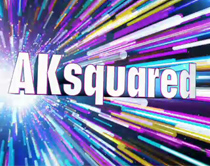

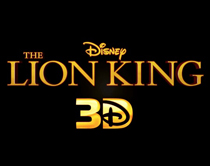
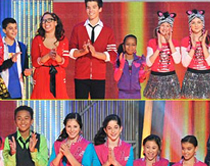
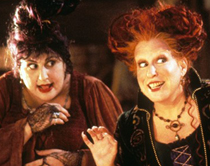
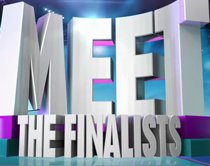
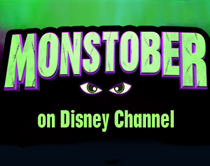

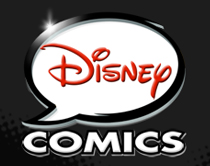
OMG I just watched the trailer for Cruella on Disney+! It looks so good! Emma Stone is so perfect for that role. Disney movies are so great, and 101 Dalmatians is one of my favorite. Now if only I could go to the movie theatre again…
why does everyone forget the ORIGINAL reason for this test’s invention, which was shipping female characters with each other. That’s literally it. I mean of course it has taken on more meaning recently but ultimately there are other tests to figure out how feminist or sexist a work is. Like others have said, this is best used as a statistical thing rather than to figure out the merit of one individual movie or work.
[…] a look at the results of the Bechdel Test, a litmus test for analysing how well-rounded and complex female characters are in films. […]
Ok, I think that Walle deserves an NA on this one…. The focal point of the film is the plant! The whole thing is a satire and the two main characters are not human and are mute. I understand this test’s purpose- but there is nothing even slightly sexist about Wall-e and it does not portray females in a compromising or sexist way…. I’m a little confused as to why it was even tested given that there are few human characters.
Sorry to like butt in here, but Black Cauldron is one of my favourite movies. What two female characters speak to each other??
I know this is old, but I had to comment, people aren’t really getting what the Bechdel Test is supposed to be telling us. It’s not supposed to indicate how feminist or anti-feminist the film is, it’s supposed to show how real women, who aren’t just a man’s accessory, are hardly represented in media. You can’t use it to gauge individual films, a film can show a well developed woman who breaks boundaries (Mulan) and not pass the Bechdel test. This doesn’t mean the film is sexist. Also, a film can pass the Bechdel test and be incredibly sexist.
The Bechdel test is not worth acknowledging when gauging individual films, but it tells us something important when the majority of films don’t pass it. As a mass. Remember, not the individual films, but the fact that all together, real women are hardly represented in media
Might I point out that Wall-E is never referred to by any pronoun throughout the movie, and Wall-E’s gender is never revealed?
Eve has a female name and her voice’s harmonics is rather in the female range. But Wall-E has a made-up name, and in fact, a personality more typical of the historical female disney character (clumsy and cute). Interestingly, Eve’s character has a personality more typical of the historical male disney character (paternalist, protective and violent).
People assumed Wall-E was male.
Wall-E… they don’t talk much at all? The main named female character is mute.
In light of the newest Disney film, I think Frozen should be added to the pass list. I mean the two main characters are sisters and most of their conversations are about the familial love. I really only one conversation is about a man and that turns into a fight about the relationship between the two sisters. (That is unless you count ‘snowman’ as a discussion of a man, and the split second of ‘who’s that? Nevermind’ when a guy walks in)
But it easily passes the test.
Those that pass that have female villain/victim interactions:
Alice in Wonderland (Queen of Hearts/Alice)
Cinderella (Stepmother and stepsisters/Cinderella)
One Hundred and One Dalmatians (Cruella de Vil/Anita Radcliffe, Perdita, female puppies)
The Rescuers (Madame Medusa/Penny)
Sleeping Beauty (Maleficent/Aurora; the good-guy squad of Flora, Fauna, and Merriweather is also all-female)
Snow White and the Seven Dwarves (The Queen/Snow White)
Those that pass that have mother/daughter interactions:
The AristoCats
Lilo & Stitch
One Hundred and One Dalmatians
Peter Pan
In case anyone was wondering, the big reason why “The Rescuers” passes and “The Rescuers Down Under” fails is that, in the former, the villain and the victim are both female and, in the latter, both male. The interaction between the victim and the villain are about the victim’s fate and the villains ambitions, neither of which involve male characters. (Yes, the victim’s fate does involve Bernard, but neither the victim nor the villain knows that…)
I think the more surprising thing here is that so many of the Disney movies actually do pass the test.
I mean, Disney movies tend to be tilted towards children, and at some point children do usually split into gender groups. Media targeted at these groups are more likely to be gender divided. So you’d expect quite a few Disney movies to be targeted at boys, and set in a world focused on boys.
In fact, Winnie the Pooh, The Jungle Book, Treasure Island, and several others on the list as fails match up with this theory. Even Up was primarily about bonding between a young man and an old man, and so you would expect it not to pass. Failing to pass the test isn’t necessarily a bad thing, especially for a film set in a natural “world of men.”
Yet there are several male targeted movies on the list as passing: Peter Pan, The Black Cauldron, Robin Hood.
This is probably because Disney actually tends to target holistic “families” even more then specific demographics.
Looking at the lists, The Little Mermaid is the one that stands out as odd. It’s pretty clearly tilted towards girls, yet it doesn’t pass the test. I wonder if it’s at all significant that in the original version the story is a tragedy without a happy ending.
[…] http://disney-blog.com/2011/05/the-bechdel-test-and-disney-films/ […]
Ashgreen –
It’s been years since I last watched Hercules, but my guess is that the film passes because of the nine Muses.
Some of these I don’t think pass.
Hercules: Are there really two named women? I mean we see Hera, but is she ever called by name? At what point do we see two women talking about something other than a man? I don’t even remember Meg talking to anyone really.
Beauty and the Beast: Does Belle talking to a wardrobe about what she’s going to wear really count? Because otherwise all of her conversations with women revolve around The Beast.
Mulan: I don’t really recall her ever speaking to another woman about anything other than a man/men except when she says that she wrote notes on her arm. Hardly a flying pass.
I don’t know that Beauty and the Beast passes the test. Belle and Mrs. Potts speak, but they only ever talk about The Beast. I suppose she talks to the wardrobe about being a talking wardrobe and what she’s going to wear to dinner. Not exactly the kind of conversation that inspires major passage.
Dumbo definitely passes! After all, the elephants are all females, and they are constantly gossiping about all kind of stuff. For example, the whole “dialogue” when they have to built the pyramid is about how idiotic the whole idea is.
I feel like the Lion King passes as well – the mothers talk for a little bit, and Nala speaks to her mother. The sequel also passes – Nala talks to both her daughter Kiara and yells at Vitani. Zira and Vitani also speak to each other.
Mutestar:
The remake of “101 Dalmatians” passes pretty clearly. Anita and Cruella’s acquaintance is reimagined – Cruella is no longer Anita’s “dearly devoted old schoolmate” but her employer, and a lot of their conversation is about Anita’s work.
It is important to remember that the Bechdel test is somewhat subjective, and that there can be good reasons for failing it. But that doesn’t mean the test is without value. What I like about this article is that it focuses on the percent of the films that pass it rather than the individual films, because that’s what the Bechdel test is about. Women make up 50% of the population, so when so few movies feature multiple female characters and portray them as actual people, it’s something we need to think about.
Some people have argued that “Mulan” fails the test because when she’s with the other female characters, they’re only talking about relationships. Those people do have a point, but I think “Mulan” is a special case and failing the test works toward its advantage. For one, the majority of the movie takes place in a men’s army. Prior to that, by not having Mulan talking about much with the other women, it establishes her feelings of isolation and her “misfit” status. She wants to do more than get married, but that’s what the other women in her society want.
I think the Toy Story films also have somewhat of an excuse. The characters are all toys from a young boy’s toybox. It’s not a stretch to say that most of Andy’s toys would represent male characters.
One could also excuse WALL-E on account that the film is largely silent. There is only one character that has any prominent speaking role. Even with the sex change to the captain, the film would still fail the test.
Hi Pete,
To answer your question, rule #3 means at least one conversation between two women needs to be about something other than men. So, a movie will pass if the women have 10 conversations and only 9 are about men, but a movie will fail if two women talk to each other only once and their conversation is (largely) about a man or men.
The Bechdel Test, like most films, is somewhat subjective and open to interpretation. There are frequent debates about which characters count as “named females”, how long they have to speak to each other to have it count as a “conversation”, and how much men have to be discussed to have the conversation “fail”. Of course, if you look at the Reverse Bechdel Test (at least two men who talk to each other about something other than women), 99% of movies pass without question. It’s problematic that there are so few women in most movies that we have to dissect their conversations line-by-line in order to give a film a pass/fail rating.
If you’re interested in reading further, check out the Bechdel Test website (http://bechdeltest.com/) for some really interesting debates and to see which of your favorite films have passed.
@Disney-Blogger
Just out of curiosity, though, does rule #3 mean “none of the conversations are about men”, or just “not all of the conversations are about men”? If it’s the former, my screenplay will probably fail since the two main characters will bring up men/boys at some point, though I’ll try to put more focus on women in future screenplays. On the plus side, however, it gives films a higher goal to reach in order to focus on women. If it’s the latter, any film could pass simply by having two female characters have many conversations about men and one not, which doesn’t really feel like a pass, does it? Personally, I think the Bechdel Test should be refined to be more specific; I’m not saying there should be more rules, but that the rules themselves should be more specific, so that it becomes more clear as to what passes and what fails.
Pete,
Thank you so much for your comment! I don’t know many young men your age, but you sound like a stand-up guy, and I’m thrilled to hear that you are following your passions and writing a film. Best of luck to you! I would strongly recommend that you learn proper screenplay formatting (if you don’t already know it) and that you consider investing in professional screenwriting software like Final Draft Pro (if you can afford it – they have a $40 iPad app, which isn’t exactly cheap, but it’s cheaper than their computer-based software). A properly formatted screenplay will go a long, long way in getting the attention of industry professionals.
As someone who went to film school and who currently works in the industry, I can confirm that the gender divides persist and that it can be tough to get those in power to put their faith in the audience-appeal of female-driven stories, although a great screenplay (Bridesmaids, Pitch Perfect, etc.) can help immensely. The mass-market movies dominating theaters this summer (The Heat, aside) show that we still have a long, long way to go towards equal representation of the sexes in movies and getting women to play roles other than the girlfriend/female sidekick/damsel in distress. But if men and women like you are the future of Hollywood, I have faith that things will change for the better.
Keep writing!
How many Disney films pass what seems to be a simple test about gender roles – it’s that strange combination of interesting and devastating. Why is it so hard just to write a screenplay where two of the characters talk about something other than the opposite sex?
I’m only 16 (turning 17 soon), I’ve never had any experience in the film business, and all I know about filmmaking is what I hear about it from reviews and “making of” videos, and guess what? I am currently writing a screenplay, the main characters are female, and they have quite a few conversations about something other than men/boys. Of course, it wouldn’t be so surprising if I were a girl, but I’m not – I’ve been male my whole life, and I don’t show any signs of wanting to change. So how does a 16-year-old guy with extremely vague knowledge about filmmaking write something that passes the Bechdel test, yet dozens of high-budget films from a world-renowned studio fail it? It makes me sick to the stomach – and I know that sounds weird from a male perspective, but that just shows how great are the sexism levels.
I honestly don’t comprehend why women are constantly looked down upon – they have complex personalities, intricate emotions and much more common sense than men – the complete opposite of how the media portrays them. If you are a woman/girl reading this comment and are seeking some advice on how to be a good role model for young girls, let me tell you that YOU can make a difference in the world by just being yourself… Okay, that’s an age-old cliche, but what you can do is write a work of fiction where the female characters simply have better things to do than talk about guys. Men/boys don’t have to be the centre of a woman/girl’s life; if anything, they should just be brought up sometimes, as a little something on the side. Try it; I’m sure you’ll do better at it than I will! (How much is that saying anyway?)
Bottom line: women deserve equal recognition to men.
It is really interesting how so few movies pass what should be a realitivly simple test. I mean some of them have fairly good reasons, like the Fox and the Hound because changing the main character genders would have badly changed the dynamics of their relationship which is the best feature of the film but some of them like a couple of extra minutes of dialogue and they would have passed.
I also love how some people try to argue their favorite movies through on a technicality. Although they do raise valid points.
Late to the party, but…
@James: “That movie was, from a feminist standpoint, utter garbage.”
How, exactly? (massive Brave spoilers ahead)
The “wilderness” scenes show that Merida can do anything she sets her mind to, even climbing a ridiculously tall mountain. She rightly questions the fairy-tale trope of the princess as some sort of prize for the prince to win. She points out that if she has to marry a prince, he damn well better get to know her as a person and show how they’re compatible in a relationship (arguably something young children aren’t reminded of nearly enough). She coordinates her brothers to help her sneak her mother out of the castle, then back in again. She breaks the curse she accidentally placed on her mother through a combination of masculine and feminine skills (riding, survival training, sewing), thus showing that neither is really bad. Even her annoyance with Elenor’s incessant “A princess must” rules at the beginning of the film seems to imply that it’s not being feminine that bothers her, only that “feminine, pretty princess” is the only thing her mother allows her to be. This is best shown through the dress Merida has to wear during the archery challenge–sure, it’s pretty, but like the role Elenor has for Merida, it’s so constricting that she doesn’t feel free to be herself.
Also, I fail to see how the main message of the movie–that parents and children should listen to each other more–is in any way counter to feminism. Sure it’s not a specifically feminist message, but it’s not anti-feminist.
What was wrong with Brave? I thought it was one of the most woman-empowering films Disney’s made.
[…] So Disney princesses are bad! Instead we should let girls watch all the other coming-of-age stories that feature female protagonists with a wide variety of personalities, about a third of whom are women of color, and which thanks to their variety of female villains and side characters almost always pass the Bechdel test.** […]
My argument is with WallE. Granted, Eve or whatever the female robot’s name wasn’t developed very well, but neither was WallE.
The Bechdel test isn’t about a film or form of media being “good” or “bad” it’s about women being represented. Women are roughly 50% percent of the population and yet so little time is given to them in film in comparison to their male counterparts. This is covered by the first rule of the test. While the second rule of the test gauges the idea that women are shown capable of being autonomous of men. It’s a very simple way of making people aware of a problem in media.
This doesn’t mean that these movies are sexist or don’t like women, as many of these films do have strong and interesting female characters. Conversely, It’s also not a way to gauge whether a movie is feminist or not. It’s simply asking the question “are women being represented in media” It sets a very low bar and the fact that a lot of films, even films made by Disney and Pixar which are watched by a variety of children both of boys and girls, DO NOT PASS, reveals how needed the Bechdel test is.
Lastly, if you have to argue whether a movie passes or not based on a 2 second conversation in a 90 minute film, Give it a fail. Instead, try looking for a conversation that is 60 seconds or longer and see how many pass.
There seems to be a lot of dissent that can be summed up as “But I liked the movie. I don’t want it to fail.” The problem is, this test won’t tell you if a movie is good or bad. It won’t tell you if a movie is enlightened or misogynistic. All it will tell you is “look at the number of movies where women only care about men next to the number of movies where they care about something else.” Or, “look at the number of movies that are told through the point of view of men next to the number of movies that are told through the point of view of a woman.”
It’s only good for the statistics. The tallying up the numbers and realizing, “Hmmm, Hollywood thinks that because I have a penis, I won’t be willing to watch a story about a woman!” or “Hollywood thinks that because I don’t have a penis, the only thing that matters to me is finding/keeping someone that does!”
You can’t use this test to judge an individual movie, guys, you just can’t. That’s why the original comic, where the woman says “I won’t watch a movie that doesn’t pass this test” is so stupid. There are plenty of awesome movies that fail all counts of the Bechdel Test. And in a perfect world, WE WOULD STILL HAVE THOSE MOVIES. They just wouldn’t be ALL we had.
Certain movies show exactly why the Bechdel test is really just a litmus test. Wall-E, for example, contains so little dialogue it’s unsurprising there aren’t any that fulfill the requirements. UP! as well provides an example: there are really only 4 characters in UP that are capable of having significant conversations (I exclude the dogs). A maximum of three of them are on screen at any time and capable of having conversations with each other, meaning that this movie either fails Bechdel or Reverse-Bechdel.
It’s an interesting way to look at movies, for sure, but it’s really nothing more than a quick statement.
@Disney-blogger, “I haven’t seen Brave yet, but I was thrilled when Pixar announced its first feature with a lead female protagonist – and it only took them 14 films! Although I have nothing against “princess” movies (I love Tangled), I would like to see Pixar and Disney produce more female-driven films without defaulting to a feisty princess formula.”
I can tell you haven’t seen Brave yet. That movie was, from a feminist standpoint, utter garbage.
(Also the Pixar lead design team is all-male so I don’t really fault them for writing what they know. That’s like complaining that every novel in the Daughter of the Forest series has female-centric characters. It’s not even a sign of sexism in Pixar’s case, in this case it was a bunch of dudes who got together with some sweet ideas and made them movies.)
I can’t recall Mulan passing, actually- Mulan’s conversations with girls, at least before the sequel, amounts to “Marry a guy already” and “Your dad has to do something” which to me proves the test is rather stupid, if stories with a heroine can’t pass.
There is no reason that WALL-E should not be included, it’s a Disney/Pixar movie, and it contains dialogue. While it can be argued that robots have no gender, WALL-E and EVE fit into heteronormative romance tropes, and have masculine and feminine names. Also, “very little dialogue” doesn’t mean no dialogue. There are human women on the ship, and we only hear one speaking to a man.
Toy Story 3 passes (it’s a simple pass/fail test, and hardly any movies even squeak under the incredibly low pass bar); there is a conversation between Mrs. Potato Head (technically not a named character), Jessie and Barbie about Barbie being abandoned. There are also conversations between Molly/Andy’s Mom and Molly, Bonnie and her Mom, although the moms are unnamed characters.
As for Bridesmaids, I recall conversations about puppies and food, and I’m sure that there are other conversations not about men or weddings. In fact, it even DOESN’T pass the reverse-Bechdel test; none of the men have conversations with each other, and this is extremely rare.
Hard to say about The Little Mermaid. When Ariel talks to Ursula, it isn’t just about Prince Eric, it’s about becoming human, regardless of reason. It feels a little weird to put WALL-E on the list in the first place, considering there’s very little dialogue. The only character with a significant amount of dialogue was the ship captain, and most of the time he was either speaking to the ship’s autopilot or the passengers of the ship. All the other characters were robots who communicated with beeps, clicks, pre-programmed phrases, or one-word lines. And furthermore, most of the robots didn’t really have anything to indicate a gender. Wall-E and EVE had masculine and feminine voices, respectively, but most of the other robots didn’t have that. So, should WALL-E even qualify for consideration?
Hi everyone,
I’m excited to see what a great discussion this post has inspired!
I haven’t seen Brave yet, but I was thrilled when Pixar announced its first feature with a lead female protagonist – and it only took them 14 films! Although I have nothing against “princess” movies (I love Tangled), I would like to see Pixar and Disney produce more female-driven films without defaulting to a feisty princess formula.
The ratings of the above Disney/Pixar films are based on the consensus of commentors at the Bechdel Test Movie List (http://bechdeltest.com/). I haven’t personally analyzed some of the films, especially the older Disney films which are locked away in the Vault, but when a film’s pass/fail status is questionable (“Tarzan”/”The Lion King”, as pointed out by Mutestar and Fayers), I prefer to tip the scale to a FAIL rating.
99% of Hollywood films pass the Reverse Bechdel test without question (guys talk to guys about something other than women), and the few that are borderline Bechdel-approved and maybe have a couple of named females talking to each other, don’t deserve a free pass.
I’m not sure, but I think The Lion King passes. Nala’s mother is named, she’s called Sarafina, but I think she only is in the credits. Anyway, a brief conversation happens between Nala, Sarafina and Sarabi (Simba’s mother) during the bath scene, the conversation focuses on Nala wanting to go and play with Simba, and the two mothers deciding if the should let them. Nala also says one word to Sarabi, ‘please’, at the same time as Simba. Does that count as a conversation? Just google ‘bath scene lion king’ and decide for yourself.
I think Brave passes with flying colors. While it involves marriage, it’s basically like Toto in the Wizard of Oz: the marriage gets the plot moving, but otherwise has very bearing on the plot. In the very beginning Merida and her mother are playing together, fast forwarding to a talk about magic, how to behave Like A Lady and then plenty of conversations about “no mom that’s not how you catch fish/eat poison berries/walk like a bear” (though that may not count since the mom didn’t technically speak during them? ) And anyway, none of the conversations with the witch were about men.
Personally, I think it’s super optimistic. 🙂
I would really like it if the list could give at least one of the reasons why a movie passed. I’m wracking my brains but I just can’t remember where some girls talked to each other in Hercules. Or was it the Muses that are being counted? Because in the main plot, I just can’t remember a time at all…. not to say I don’t love the film, I just can’t remember. Same with the Emperor’s New Groove.
I know it’s new and this list might not be updated yet, but Brave should pass the test. While the Queen and Princess Merida argue over the issue that Merida needs to get married soon, they also talk about fate and how the other never listens to her.
I think if we have to debate weather the interaction was long enough to count such as in lady and the Tramp than it just shows how big of a problem Hollywood has with making female characters that have a serious importance to the story. When a film fails the test it means that it has less than two important female characters, when all the women can talk about is the men of the story instead of anything other than the men in the story, films that make it on technicalities have the same problem, because even films that unarguably pass still don’t usually have two females characters that have any importance to the plot or that it could be considered “pro feminist”.
Toy Story 3 passes? How so?
I pick on Pixar because I LOVE those films. And more importantly, my daughter loves them. It makes me really sad that she is given so few girls and women to identify with. The female characters tend to be well-rounded and feisty (none of that “be a pretty princess and a man will come love you” crap), but the stories are typically buddy stories about men. Buzz and Woody in the Toy Story movies; Mike and Sully in Monsters, Inc.; the cook and the rat in Ratatouille; the old man and the boy in Up . . .
For all their imagination, it never seems to occur to them that they could tell the story of a lonely old woman and a lonely young girl and how they bond.
Incredibles squeaks by–if it’s a Pass, it’s a D at best. Helen and Violet have a brief but significant mother-daughter talk, and Helen and Edna talk about supersuits for a few minutes before returning to the topic of . . . Helen’s husband. It’s typical Pixar: the female characters are feisty and interesting, but they are vastly outnumbered by the male characters, who are the meatiest parts.
Oh! Also, you’ve forgotten 101 Dalmatians. Cruella and Anita discuss the puppies iirc and I think Nanny and Anita talk about the dogs, or, barring that, the cows talk to each other about the puppies.
Possibly disagree with Lady and the Tramp. Peg talks to lady about her license (with Boris), before discussing Tramp. While part of the same scene, there’s a distinct change in conversation. It also has several “conversations” between Darling and Lady, just Lady can’t “converse” being, well, a dog. Debatably a discussion between Aunt Sarah and Darling too, though they usually talk about the baby. The baby, while male, certainly isn’t a man. Also discussions between women at the baby shower.
Atlantis – at the very beginning of the movie, Kida’s mother talks to her.
Tarzan – Terk talks to her mother. Also, while Turk and Kala talk about Tarzan, but he’s an infant.
It’s interesting though. In The Little Mermaid, I think that’s part of Ursula’s strategy – keeping the conversation on the man, despite all attempts to redirect it.